Under the pretext of separation between regime and people, Iran seeks $5 billion in IMF emergency funding to fight COVID-19. This would significantly undermine the pressure on Iran being applied by US sanctions, and therefore the loan should be denied.
At the beginning of March 2020, the Governor of the Central Bank of Iran, Abdolnasser Hemmati, requested that the International Monetary Fund provide $5 billion as an emergency loan to Iran to fight the COVID-19 pandemic. Later that month, Iranian President Rouhani similarly asked the US to lift sanctions imposed on Iran, for humanitarian reasons. These requests reflect an Iranian attempt to draw a distinction between the regime, which is in ongoing conflict with the international community, and the Iranian people, who are suffering from the virus and the effects of sanctions.
President Trump rejected the request for sanctions relief, but the request was somewhat supported by US Democratic Presidential candidate Joe Biden, who urged the President to remove some of the sanctions. In mid-May, Democratic Senator Dianne Feinstein proposed the initiation of a peace plan with Iran under the auspices of the global corona crisis, under which the Trump Administration would agree to Iran receiving a $5 billion loan from the IMF and a removal of some sanctions in exchange for direct bilateral talks at the level of foreign or defense ministers. Some US-based Iran analysts, known for their conciliatory approach to Iran, also called on the Trump Administration to ease sanctions on the grounds that a humanitarian catastrophe is underway in Iran due to the spread of corona.
Following the American president’s refusal, Tehran accused Washington of crimes against humanity. In line with its reconciliation policy with Iran, the EU criticized the Trump Administration’s decision to oppose the Iranian request. Russia, which uses Iran as a bargaining chip against the US, has also criticized the US refusal. Despite this, or perhaps due to this pressure, the Iranian request is still being discussed in Washington.
With the loan, the regime would cope with economic difficulties it faces while allowing it to continue funding its strategic plans – nuclear and missile programs, its expansionist aspirations in the region, and its sponsorship of its terrorist array, comprised of both Shiite and Sunni organizations. President Rouhani has stated outright that the Iranian Foreign Ministry’s campaign is aimed at persuading the international community to lift sanctions using the corona crisis as a pretext. Iranian spokesmen, including Interior Minister Rahmani-Fazl and head of the Iranian Food and Drug Organization, Mohammad Reza-Shanehsaz, have admitted that Iran has no shortage of medical supplies and that it can handle the corona crisis on its own. Iran does not appear to need humanitarian aid. Iran’s request for financial assistance is intended to singularly enable expansion of its regional hegemonic march.
Despite growing economic hardship because of corona and the spread of the epidemic in Iran, Iranian leader Khamenei has chosen not to utilize the charity foundations under his control, which are estimated to be valued at hundreds of billions of dollars. According to one of the estimates, the capital of these funds, the Execution of Imam Khomeini’s Order (also known as SETAD), the Bonyad-e Mostazafan Fund, and the Razavi Economic Organization (which controls the enormous revenues of the Imam Raza shrine of Mashhad) is valued at $200 billion.
Khamenei’s refusal to use these funds to treat corona has drawn criticism from government, academic, and opposition circles within Iran. These circles include Masih Mohajeri, former Presidential Adviser to former Presidents, Ali Akbar Hashmi Rafsanjani (1989-1997), and Mohammad Khatami (1997-2005), currently the editor of the daily Jomhuryi-e Islami, MP Bahram Parsaei, former political prisoner and reformist Mostafa Tajzadeh, opponent of the Regime Abolfazl Qadiani, and one hundred other academics and social activists.
The message that emerged from these critiques is that the funds belong to the Iranian people and, therefore, the regime’s failure to help alleviate the people’s distress is tantamount to embezzlement by Khamenei. In his remarks, Qadiani emphasized that the regime could deal with the economic consequences of the corona crisis on its own if Khamenei devoted even ten percent of his capital to the crisis. The criticisms further prove that Iran’s request for a loan is not essential, but is rather an underhanded attempt to obtain additional resources for the regime.
Moreover, in April 2020 the very independent Grand Ayatollah Ali Sistani donated $1.5 billion to treat corona patients. The donation was made as part of Sistani’s attempt to protect his autonomy from the regime. (Sistani rejects the regime’s “Rule of Jurisprudence.” Moreover, the regime doesn’t like the fact Sistani’s many followers widely distribute his religious decrees – fatwas.) In any case, this donation again contradicts the regime’s claim that foreign funding is desperately needed to deal with corona.
As previously mentioned, there is real concern that Iran will use funds received from an IMF loan for nuclear and missile programs, subversion in the region, and terror sponsorship. Speaking on “Jerusalem Day,” Khamenei announced Iran’s determination to fulfill its aspiration for regional hegemony and its goal to be the world’s leading sponsor of terrorism, declaring that Iran will continue to support the Palestinian struggle (one of Iran’s main means of subversion against the US and its policies in the region).
Iran continues to pressure Iraq into expelling US forces. The following indicators demonstrate that this remains Iran’s primary goal.
Declaring in mid-May that Americans should withdraw from Iraq and Syria, Khamenei explicitly expressed the real threat posed to US forces by pro-Iranian Shiite terrorist groups in both countries. Only a few hours after this statement, a rocket attack occurred at the Green Zone complex in Baghdad near the US embassy. In addition, Qais al-Khazali, commander of the Asa’ib Ahl al-Haq militia, announced that Iraqis would not tolerate a continued US presence, signaling his readiness to also implement the Iranian strategy. Lastly, the declaration of senior official of Hash al-Shaabi, Hashim Al-Haidari, on Iranian TV, that Iraqis want to commit suicide bombings in order to remove the US from Iraq, goes even further in explaining the grave threat posed by the pro-Iranian array in Iraq.
At the same time, Iran continues to threaten Saudi Arabia, the US top ally in the Persian Gulf. Following Iran’s fear of Iraqi Prime Minister Mustafa al-Kadhimi’s move for rapprochement between Iraq and Saudi Arabia, IRGC-backed Kata’ib Hezbollah and Al-Nujaba threatened to directly attack Saudi Arabia. According to the US administration, from 2012 onwards, Iran has invested at least $16 billion in terrorist financing, and, according to Iranian National Security Committee member Heshmatollah Falahat-Pisheh, Iran has transferred approximately $30 billion directly to the Assad regime. It should be emphasized that the Trump Administration sanctioned Tadbir Kish Medical and Pharmaceutical Company after Iran’s Central Bank used it to disguise the payments it made to Russia to help Syria buy oil from Iran.
In light of the Iranian policy of systematic prioritization of the nuclear, missile, subversion and terrorist programs at the expense of the Iranian people, it is no wonder that Manouchehr Bakhtiari, whose son was killed by security forces during the November 2019 fuel protest, called on the international community to not remove or relax the anti-Iran sanctions. He warned that Iran would use these funds to continue its support of terrorist groups in Yemen, Iraq, Lebanon, and the Palestinian organizations.
Iran has acted with a serious lack of transparency and with negligence since the epidemic hit its territory. For example, Iranian Minister of Health Saeed Namaki updated the cabinet on February 19 on the spread of corona in Qom, was asked by the cabinet to not publicize it until after the parliamentary elections scheduled two days later. In addition, a BBC investigation revealed that although Iran announced the cessation of flights to China on January 30, Mahan Air (which is now US sanctions for links with the IRGC Quds Force) made 167 flights between Iran and China between that date and April 20.
Iran is in a challenging internal position since protests may resume soon. In addition, the rial continues to plummet against the US dollar, reaching on May 20 an all-time low: 180,000 rials to a single American dollar. Accordingly, former President Mohammad Khatami warned the regime on May 9 that the growing desperation of the public would likely trigger an outbreak of violent popular protest.
In a media interview in mid-May, Iran-based sociologist Saeed Moidfar claimed that the Iranian regime is aware of its impending demise but is trying to delay it as much as possible. Moidfar explained that the extreme disconnect between the regime and the public is building; and that the public’s distrust of the regime is quickly widening – as expressed via the fuel protests, suspicions surrounding the downing of the Ukrainian plane, and criticism of the dangerous flights to and from China.
The ever-present danger of an outbreak of popular protest continues to hover over the regime as long as Khamenei refuses to open the charitable funds under his control for the welfare of the Iranian public and as along as Teheran continues to suppress individual freedoms.
The distinction that Iran seeks to draw between the regime and the Iranian people (a distinction that Westerners sometimes fall for) is fundamentally unfounded. It is vital that the Trump Administration continue its “maximum pressure” campaign to force Iran to channel any available funds to the corona crisis. One of the goals of the US campaign was to push the Iranian people into revolt against the regime. It is logical, at this point, that one of two things must happen: Either it must force regime change or the regime must be forced to return to the negotiating table from an inferior position.
The Khamenei regime continues to undermine global security through the nurturing of its nuclear and missile programs, its global transnational infrastructure, and promotion of defiance against the international community in general, and the US in particular. Some recent actions include provocations against the US Navy in the Persian Gulf and its exportation of fuels, equipment, and chemicals to Venezuela’s refineries for a fee in the form of gold bullion (in clear violation of the American sanctions against both countries).
Again, at the same time, Tehran has refused to use the hundreds of billions of dollars of Khamenei-controlled funds to deal with corona. The “maximum pressure” strategy is aimed at giving the Trump Administration important advantages in, at the very least, bringing Iran back to the negotiating table and pushing it to accept Washington’s terms on nuclear and other issues. An American green light to grant an IMF loan to Iran would be interpreted by the Iranian leadership as weakness. It will not only give Iran breathing space, but also will be used by Iran to continue its subversive actions against American interests.
JISS Policy Papers are published through the generosity of the Greg Rosshandler Family.
Photo: Freepik


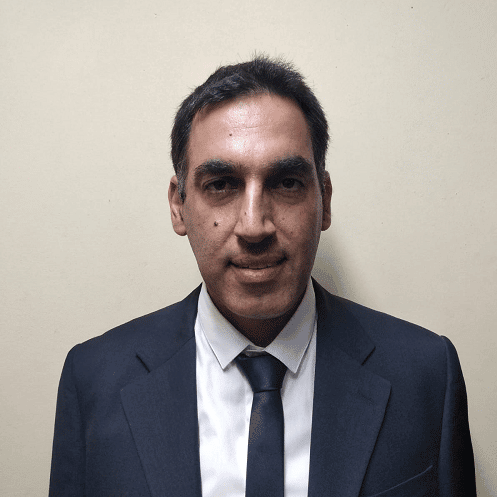
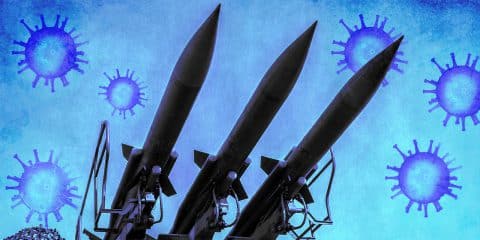

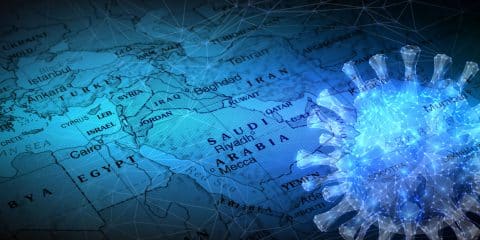
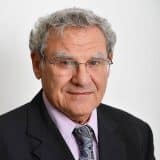
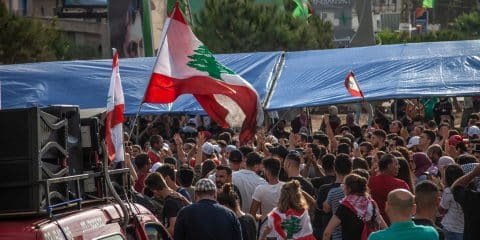
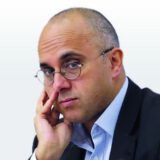
 - בניית אתרים
- בניית אתרים